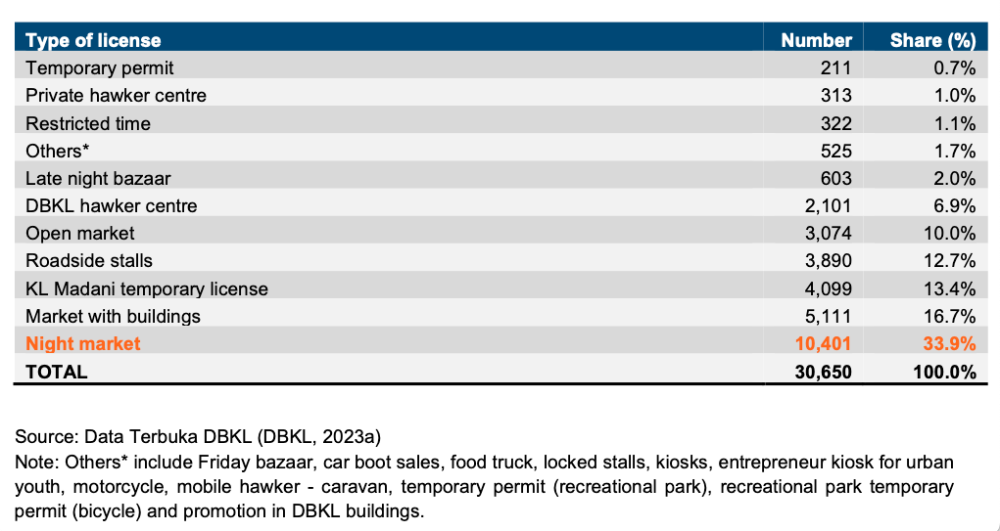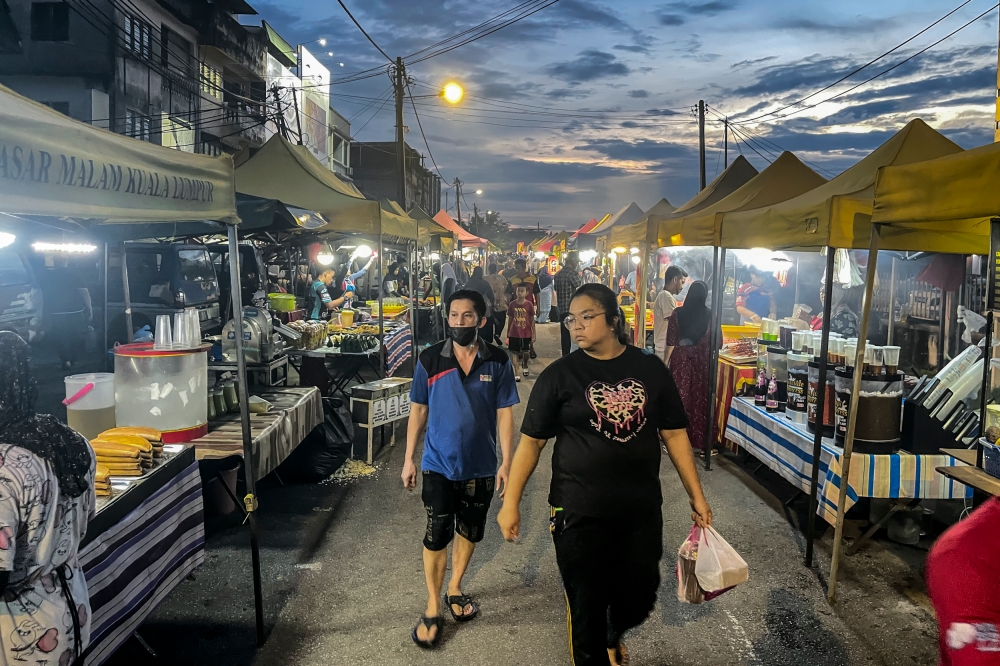- Pasar malam in Malaysia serve as vital economic lifelines, especially during downturns, offering employment and entrepreneurial opportunities for marginalised groups — including single mothers and informal caregivers.
- They play a significant cultural and social role by providing affordable food options, supporting working families, and acting as hubs for traditional crafts and community interaction, benefiting both locals and tourists.
- Despite their contributions, night markets face challenges from rising consumer expectations, regulatory gaps, and urbanisation pressures, highlighting the need for better policy support and empirical research.
KUALA LUMPUR, May xx — Night markets, commonly known as pasar malam, have emerged as both a cultural institution and an economic lifeline in Malaysia, particularly during times of crisis, a recent Khazanah Research Institute (KRI) publication has found.
According to KRI’s latest discussion paper titled “Why Night Markets Matter?”, they have been found to be an essential lifeline during economic downturns, where hawking is perceived as a primary source of income for those lacking the skills and training to compete in the formal job market.
“Night markets offer employment opportunities to individuals who have been laid off and provide a platform for those seeking to transition into business or self-employment to sustain their livelihoods.
“As a result, hawking, including operating at night markets, has been recognised as an important path for certain individuals to improve their economic and social mobility,” the literature review said.
The paper also highlighted the social role of night markets, pointing out how deeply embedded they are within Malaysia’s culture as an alternative to supermarkets.

The development of night markets since pre-independence. — Chart by KRI
Given the shifts in consumption patterns, where individuals increasingly opt for food away from home, night markets have benefited many — especially working mothers and wives with demanding work schedules or overwhelming care responsibilities.
“With a wide variety of stalls offering goods at generally more affordable prices, night markets also help ease financial pressures, particularly in the face of current economic challenges,” it said.
Crucially, night markets have also offered inclusive opportunities to groups often excluded from the formal economy, such as single mothers and informal caregivers.
Their flexible hours and low entry barriers have enabled many women to participate in entrepreneurship and earn income while juggling care responsibilities — a contribution that aligns with wider national goals on gender equality and inclusive growth.

Night markets offer opportunities to groups often excluded from the formal economy, such as single mothers and informal caregivers. — Picture by Firdaus Latif
A hidden gem for cultural tourism
Beyond their economic role, the paper highlighted the potential of night markets as underutilised assets in Malaysia’s tourism and cultural economy.
Night markets, it said, create vibrant spaces of community interaction, showcasing traditional street food, crafts, and performances that appeal to both locals and tourists.
“Night markets are not just places of trade — they are cultural institutions that enhance urban vibrancy and support the local tourism ecosystem,” the paper noted.
Considered an institution itself, the paper said the evolution of night markets in Malaysia is closely tied to Malaysia’s urbanisation trajectory and shifting food consumption patterns — a recurrent theme from literature review findings of over 60 written works.

Number and share of hawkers in Kuala Lumpur, by type of license, as of 3 October 2023. — Chart by KRI
Citing public data obtained from Kuala Lumpur City Hall (DBKL), night markets now account for the largest share of informal businesses’ licences issued in Kuala Lumpur at 33.9 per cent as of 2023.
“The growth and development of night markets are mainly driven by supportive policies such as expanded access to loans, permits, and licences; efforts to promote equitable opportunities across ethnic groups; upskilling initiatives for small traders; infrastructure enhancements; accelerated digital adoption; and the implementation of structured guidelines by local authorities.
“More importantly, strategic considerations in planning and establishing night markets have helped this informal economy thrive and remain relevant for consumers,” it said.

The traditional night market model is being challenged by change in social norms. — Picture by Hari Anggara
Facing new demands from a rising middle class
At the same time, the paper acknowledged that rising living standards and evolving consumer expectations may increasingly challenge the traditional night market model.
“As the standard of living of Malaysian households continues to rise, it becomes increasingly important to understand how these socio-economic shifts may affect consumer preferences towards night markets,” the paper said.
It noted that the sector has also suffered from regulatory shortfalls in areas such as waste management, food safety, and public health standards.
“Questions arise as to whether middle-class consumers will continue to prefer them given the growing emphasis on food safety, hygiene and convenience; or whether they will shift towards formal retail and food service outlets,” it said.
While night markets remain an essential part of Malaysia’s urban and economic fabric, several emerging issues require deeper examination. The literature review revealed limited empirical studies on how such trends intersect with licensing frameworks, spatial access, and trader resilience.
The paper, co-authored by Mohd Amirul Rafiq and Nur Sofea Azahar, is the second in a series under KRI’s NEXUS Project and explores the multidimensional role of night markets in Malaysia’s social, economic, and cultural landscape.

